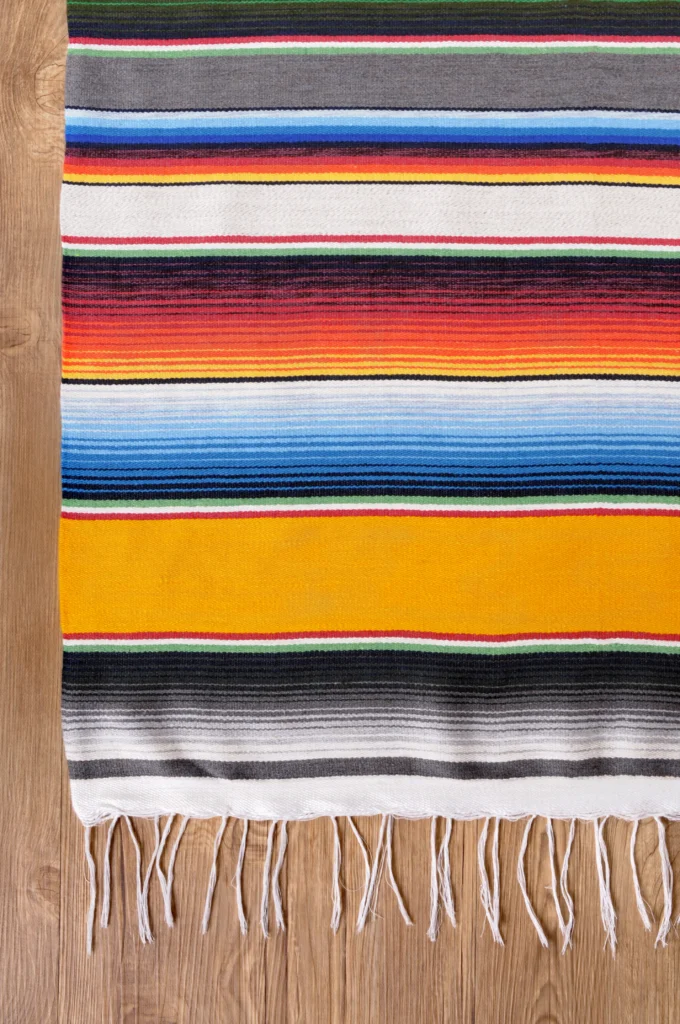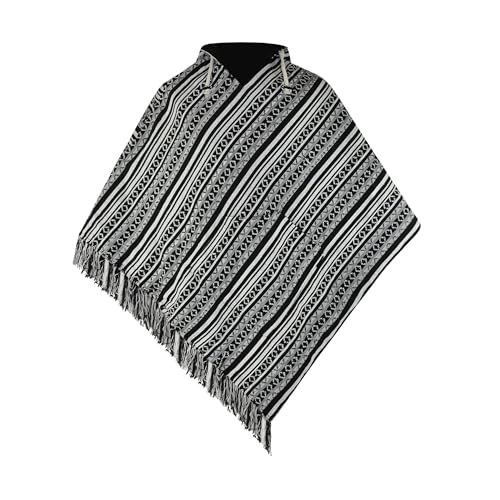Sarape
Traditional Mexican: Types and Styles
Looking for a garment that combines tradition, history and art?
The Mexican sarape is much more than that: it is a cultural symbol that represents the artisanal wealth of Mexico. Its vibrant colors, unique textures and iconic designs have made it an emblem inside and outside the country. Discover here the types of sarapes, their origin, meaning and the best tips to take care of it and preserve its authenticity.
No se han encontrado productos.

Why choose a Mexican sarape? Benefits and unique features
Choosing a Mexican sarape means choosing a garment with history, style and, above all, quality. The sarapes are handcrafted, which ensures a unique and durable piece. But why are they so special?
- Authenticity and tradition: By purchasing a Mexican sarape, you support the work of artisans who keep ancestral weaving and embroidery techniques alive.
- Variety of styles and colors: Sarapes come in a wide variety of colors and patterns, allowing each person to find one that suits their taste.
- Versatility: Sarapes are ideal for different uses, whether as a coat, as a decorative blanket for the home or even as a piece of art.
- Durability: Made from high quality materials, the sarapes are durable and designed to last for years.
In addition to being a functional garment, the sarape is a reminder of Mexico’s rich culture and is a perfect item for those who want to carry a bit of Mexico with them or integrate it into their daily lives.
No se han encontrado productos.
Serape Care: How to Preserve its Color and Texture
The Mexican sarape is a garment that deserves specific care to maintain its bright colors and soft texture. Here are some practical tips for its care:
- Avoid prolonged exposure to the sun: If you use it as decoration, try not to expose it to the sun continuously, as the colors may fade over time.
- Dry cleaning
: Many sarapes are made from delicate materials, so it is best to dry clean or have them cleaned at a cleaner’s. Avoid washing them at home unless the instructions allow for it. - Proper Storage: If not in use, store in a cool, dry place, avoiding excessive folding to prevent permanent marks or wrinkles.
- Shake it gently: If it just needs a little cleaning, gently shaking it is a good option to remove dust without damaging the fibers.
Caring for a Mexican sarape allows its beauty to last for generations, thus preserving a piece of Mexican tradition and culture.

Frequently Asked Questions
What is the sarape and what is its meaning?
The sarape is a traditional Mexican garment, usually rectangular, woven on a loom and decorated with colorful patterns and stripes. Its meaning goes beyond being a piece of clothing; it represents the identity and pride of Mexican culture. The sarape is often a symbol of cultural resistance and connection to Mexico’s indigenous roots.
Where does the sarape originate from?
The Mexican sarape is originally from Saltillo, in the state of Coahuila, in northern Mexico. In fact, the Saltillo sarape is one of the most recognized for its design and quality. However, today it is produced in different regions of the country, each contributing its own techniques and styles. Throughout history, the sarape has evolved in its design and use, adapting to modern fashion and needs.
How is a sarape made?
The process of making a sarape is entirely handmade and can take weeks or even months. The materials used can vary, but usually include wool or cotton. Weavers use pedal looms and traditional techniques to create the characteristic patterns and colors of each sarape. The designs are carefully thought out and each piece is unique, making the sarape a work of textile art.
Origin of the Mexican sarape: roots and evolution
The sarape has its roots in pre-Hispanic times, when indigenous cultures in Mexico were already using advanced weaving techniques. With the arrival of the colonizers, new materials and methods were introduced, merging with local techniques to give rise to the sarape as we know it today.
Initially, the sarape was used as a coat due to its ability to retain heat. Over time, it became a garment with high symbolic and cultural value, used in ceremonies, celebrations and, of course, as a sign of national pride.
The evolution of the sarape has allowed this garment to remain relevant in today’s fashion, adapting to different styles and trends without losing its essence.
Materials and craftsmanship of Mexican sarapes
The authenticity of the Mexican sarape lies in its materials and the manufacturing process. Although there are industrially produced sarapes today, authentic sarapes are handcrafted by artisans. Here we show you the main materials used:
- Wool: This is the most traditional material and is used especially in winter sarapes. Wool makes it possible to create a resistant and warm garment.
- Cotton: Cotton is ideal for lighter sarapes, perfect for warm climates or for use as a decorative blanket.
- Acrylic: Although less traditional, acrylic has gained popularity for its strength and affordability. It is used in modern sarapes and in large-scale productions.
The process of making the weaving includes dyeing the threads, creating the patterns on the loom and finally adding details and finishing touches. This process requires skill, patience and a deep knowledge of weaving techniques.


